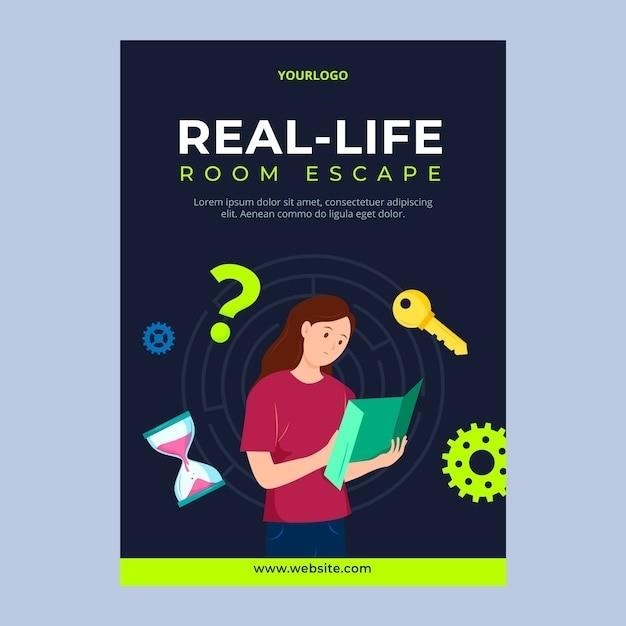Life As We Knew It⁚ Book Details and Availability
Susan Beth Pfeffer’s “Life As We Knew It” (Life As We Knew It Series Book 1)‚ published October 1st‚ 2006 by Harcourt Children’s Books‚ is a science fiction novel. Numerous online sources offer the ebook and claim PDF availability; however‚ legitimacy varies. Verify sources carefully.
Publication Details and Author
Susan Beth Pfeffer penned the post-apocalyptic young adult novel‚ “Life As We Knew It‚” initially published on October 1st‚ 2006‚ by Harcourt Children’s Books. It’s the inaugural book in the “Last Survivors” series. The novel’s widespread popularity led to numerous ebook editions and‚ according to various online sources‚ PDF versions. However‚ readers should exercise caution when seeking PDFs online to ensure they are accessing legitimate copies and not infringing on copyright laws. The book’s success spurred further works in the series‚ expanding on the initial story and its impact.
Where to Find the PDF⁚ Legitimate and Illegitimate Sources
Locating a legitimate PDF of “Life As We Knew It” requires careful consideration. While many websites claim to offer free PDF downloads‚ many are unreliable and may distribute pirated copies. Reputable ebook retailers like Amazon Kindle offer legal digital downloads‚ often in various formats including PDF. Public libraries may also provide access to digital copies. Be wary of unofficial websites or file-sharing platforms‚ as these often host illegal copies‚ potentially containing malware or violating copyright. Always prioritize official channels for legally accessing the book’s PDF version to support the author and publisher.
Exploring the Novel’s Content
This section delves into the narrative structure‚ character development‚ and overarching themes within Susan Beth Pfeffer’s post-apocalyptic novel‚ “Life As We Knew It.”
Plot Summary and Main Characters
In Susan Beth Pfeffer’s “Life As We Knew It‚” a catastrophic event alters life on Earth. A meteor impacts the moon‚ triggering devastating tsunamis‚ earthquakes‚ and volcanic eruptions. The story centers around Miranda‚ a teenage girl‚ and her family’s struggle for survival amidst the ensuing chaos and societal breakdown. Secondary characters include her parents and siblings‚ whose relationships and individual responses to the crisis are central to the narrative. The plot follows their journey through hardship‚ loss‚ and the difficult choices they must make to survive in a drastically changed world. Their resilience and adaptability are tested as they confront the harsh realities of their new environment. The changing dynamics of their family unit are mirrored by the broader collapse of civilization‚ presenting a stark portrayal of human nature under extreme pressure. The novel’s suspenseful plot is driven by their fight for survival against overwhelming odds.
Themes and Literary Analysis
“Life As We Knew It” masterfully explores themes of family‚ survival‚ and the fragility of civilization. The novel uses a first-person narrative‚ offering an intimate perspective on Miranda’s emotional journey. The narrative’s realism enhances the impact of the catastrophic events‚ highlighting the human cost of disaster. The text delves into themes of resilience‚ adaptation‚ and the strength of familial bonds in the face of overwhelming adversity. The author employs vivid descriptions to create a sense of urgency and immediacy‚ drawing the reader into the characters’ desperate struggle. Literary devices such as foreshadowing and symbolism add depth and meaning to the storyline. The novel’s exploration of human behavior under pressure offers a profound commentary on societal structures and the importance of human connection during times of crisis‚ making it a compelling work of young adult fiction. The post-apocalyptic setting provides a stark backdrop against which the characters’ personal growth is vividly portrayed.
The Book’s Impact and Reception
“Life As We Knew It” garnered significant attention‚ achieving bestseller status. Reader reviews are overwhelmingly positive‚ praising its gripping plot and emotional resonance. The novel’s impact extends beyond individual readers‚ sparking discussions on societal resilience and environmental concerns.
Critical Reviews and Reader Responses
Critical reception of Susan Beth Pfeffer’s “Life As We Knew It” has been largely positive‚ with reviewers praising its compelling narrative and relatable characters. Many lauded Pfeffer’s ability to create a believable and emotionally resonant post-apocalyptic world‚ while others highlighted the novel’s exploration of family dynamics and survival under extreme pressure. Online reviews and reader comments consistently cite the book’s suspenseful plot and its exploration of themes like resilience‚ loss‚ and the enduring strength of human connection in the face of unimaginable adversity. The book’s emotional impact has resonated deeply with readers of all ages‚ establishing it as a significant work within young adult and post-apocalyptic fiction genres. The consistent positive feedback emphasizes the book’s ability to engage readers on both emotional and intellectual levels.
Adaptations and Related Media
While a film adaptation of “Life As We Knew It” hasn’t been officially announced‚ the novel’s popularity and compelling storyline make it a strong candidate for future screen or television production. The book’s themes of survival‚ family‚ and societal collapse resonate with audiences captivated by post-apocalyptic narratives. Fan-created artwork and discussions online demonstrate the book’s ongoing engagement with readers‚ suggesting potential for further multimedia expansion. The book’s enduring appeal‚ evidenced by continued sales and online discussions‚ could lead to future adaptations in various media formats‚ including graphic novels or video games‚ expanding the novel’s reach to new audiences and enhancing its cultural impact.

Scientific Context of the Novel
Pfeffer’s novel explores the hypothetical consequences of a catastrophic lunar impact. The book doesn’t delve into complex astrophysics‚ focusing instead on human responses to a devastating event.
The Science Behind the Apocalyptic Event
In Susan Beth Pfeffer’s “Life As We Knew It‚” the cataclysmic event is triggered by a meteor impacting the Moon‚ significantly altering its orbit. This closer proximity to Earth causes devastating consequences⁚ powerful tidal forces generate massive tsunamis‚ earthquakes of unprecedented magnitude rock the planet‚ and volcanic eruptions erupt worldwide. The narrative doesn’t explicitly detail the astrophysical calculations behind the event’s scale and impact‚ prioritizing the human drama of survival. However‚ the implied scientific basis suggests a chain reaction of celestial mechanics and geological upheaval‚ causing widespread environmental devastation and societal collapse. The novel’s focus remains firmly on the emotional and societal impact of this fictionalized but scientifically plausible disaster‚ rather than a detailed scientific explanation of the celestial mechanics involved.
Astrobiology and the Definition of Life
While “Life As We Knew It” doesn’t directly delve into formal astrobiological definitions‚ the narrative implicitly raises questions about life’s resilience and adaptability. The novel’s catastrophic event forces characters to confront the fragility of human existence and the potential for life to persist under drastically altered conditions. The struggle for survival highlights the fundamental requirements for life⁚ access to resources like food and water‚ maintaining a stable environment‚ and the ability to adapt and reproduce. The book’s post-apocalyptic setting indirectly explores the broader astrobiological question of whether life‚ as we know it or in other forms‚ could exist on other planets or in drastically different environments‚ even if the novel itself doesn’t offer explicit answers.

Beyond the Book⁚ Related Works and Discussions
Explore similar post-apocalyptic young adult fiction and engage in online forums dedicated to discussing “Life As We Knew It” and related themes.
Similar Post-Apocalyptic Fiction
Readers who enjoyed the gripping narrative and survival themes in Susan Beth Pfeffer’s “Life As We Knew It” might also appreciate exploring other young adult post-apocalyptic novels. These often feature relatable teenage protagonists facing extraordinary challenges and exploring themes of resilience‚ family‚ and the human spirit in the face of disaster. Consider works focusing on societal collapse‚ environmental catastrophes‚ or other large-scale events that disrupt the known world. Many such novels delve into the psychological impact of survival and explore the evolving relationships between characters forced to rely on each other. The search for resources‚ the rebuilding of communities‚ and the struggle for hope are common elements. Looking for similar titles can lead to discovering new authors and stories that resonate with the emotional depth and suspense found in “Life As We Knew It.”
Online Forums and Communities
Engaging with online communities dedicated to books can enhance the reading experience. For “Life As We Knew It‚” numerous online forums and social media groups exist where readers discuss the novel’s plot‚ characters‚ and themes. These spaces offer opportunities to share interpretations‚ ask questions‚ and connect with others who have read the book. Participating in these discussions can provide valuable insights and different perspectives on the narrative‚ enriching your understanding of the story. You might discover fan theories‚ alternative interpretations‚ and creative writing inspired by the book. Such online interactions foster a sense of community among readers‚ allowing for a shared exploration of the themes and ideas presented in Susan Beth Pfeffer’s work. These forums are valuable resources for post-reading analysis and further engagement.
